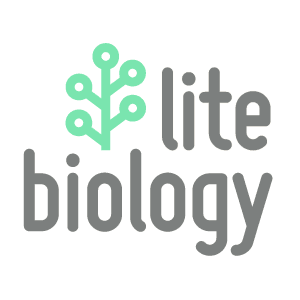The final part of cellular respiration is called the electron transport chain, where oxidative phosphorylation occurs. Oxidative phosphorylation refers to phosphorylation of ADP to ATP using energy released by oxidation of NADH + H+.
The electron transport chain takes place on the inner mitrochondrial membrane, using NADH + H+ made by glycolysis and the Kreb's cycle.
The transport of electrons from one electron carrier to another establishes a concentration gradient of H+
NADH + H+ goes from the mitochondrial matrix to the inner membrane and passes 2 electrons to the first electron carrier. This releases some energy that allows 2 protons (H+) to be transferred across the inner mitochondrial membrane into the intermembrane space. NAD+ is recycled back to the matrix for use in glycolysis and the Kreb's cycle.
The electrons are passed from one carrier to another, and each time this happens, more energy is released. This energy is used to pump more protons (H+) into the intermembrane space. The concentration of H+ is therefore much higher in the intermembrane space compared to the matrix, resulting in a concentration gradient of H+.
Oxygen is required for aerobic respiration
The electrons are finally passed to a terminal electron acceptor: oxygen.
O + 2e- --> O2-
The oxygen ion very quickly reacts with H+ in the matrix to form water.
O2- + 2H+ --> H2O
(This is the reason why we need to breathe oxygen, and also why we breathe out carbon dioxide and water vapor!)
Without oxygen, the electron transport chain cannot occur and ATP can only be .
H+ concentration gradients allow synthesis of ATP
Back to the H+ concentration gradient..... This is the important step in ATP production. Embedded in the inner mitrochondrial membrane are ATP synthase enzymes. H+ ions go from the intermembrane space (high H+ concentration) into the ATP synthase structure and is released into the mitochondrial matrix (low H+ concentration). ATP synthase uses this energy to combine ADP and inorganic phosphate (Pi) to form ATP ( 2 H+s are needed to make 1 ATP). This flow of H+ is also known as chemiosmosis.
Additional notes:
- 1 NADH can pump 6 H+s into the intermembrane space. Since 2 H+s are needed to make 1 ATP, 1 NADH is able to produce 3 ATPs.
- FADH2 can pump 4 H+s. Therefore each FADH2 can produce 2ATPs.
Animations
2 excellent animations have been produced by the NDSU Virtual Cell Lab:
The electron transport chain
ATP Synthase: How H+ concentration gradients lead to ATP synthesis
